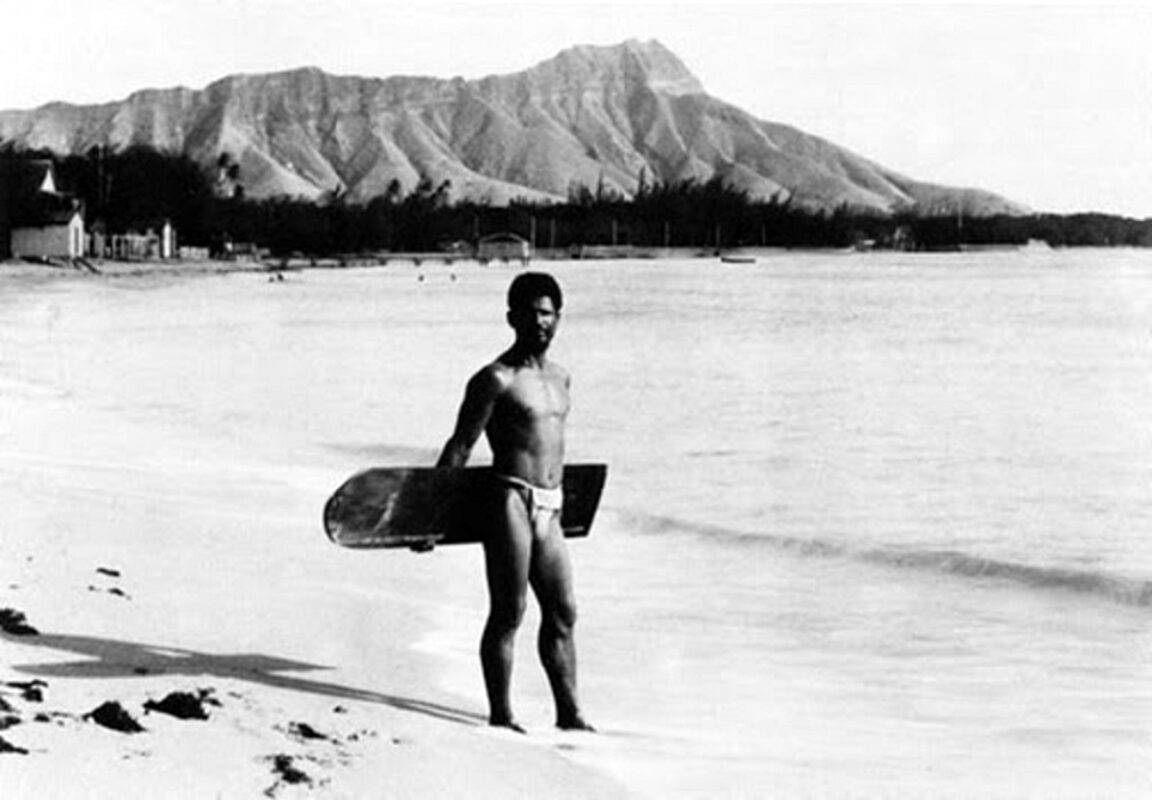History
Surfing Under the Kapu System: Ancient Hawaii’s Sacred Rules
Image Courtesy of pintrest
The Spiritual Roots of Surfing in Ancient Hawaii
In ancient Hawaii, surfing—or he‘e nalu (wave sliding)—was far more than a pastime. It was a cultural and spiritual practice intricately tied to the kapu system, a complex web of sacred laws that governed every aspect of life, from food to fishing to the waves themselves. Emerging as a formalized structure around 1300, when the Tahitian priest Pā‘ao is said to have arrived from Kahiki (likely Tahiti) and reshaped Hawaiian society, kapu elevated surfing into a ritualistic act steeped in hierarchy, reverence, and consequence.
Hierarchy on the Waves: Royals vs. Commoners
Under kapu, surfing wasn’t a free-for-all. The ali‘i (chiefs and royalty) claimed dominance over the sport, riding the most coveted breaks on long, finely crafted boards called olo, often made from sacred koa or wiliwili wood. These boards, sometimes stretching up to 18 feet, were reserved exclusively for the elite—commoners, or maka‘āinana, caught attempting to use one faced severe punishment, often death. Meanwhile, the common folk were relegated to shorter alaia boards, typically 6 to 10 feet, and lesser waves deemed unworthy of royal attention. Surf spots themselves were stratified: places like Waikiki’s famed breaks were often kapu to all but the ali‘i, their sanctity enforced by both tradition and fear.
Sacred Craftsmanship and Wave Restrictions
The rules extended beyond access. Kapu governed how boards were made—only certain priests or craftsmen (kahuna kālai) could shape them, invoking chants and offerings to the gods, like Kū, to bless the process. Waves, too, carried spiritual weight. Certain swells were deemed off-limits during rituals or when a chief placed a kapu on a break, effectively closing it to preserve fish stocks or honor a deity. This wasn’t just control—it was an early form of ecological stewardship, ensuring the ocean’s bounty endured. Violating these prohibitions wasn’t a slap on the wrist; it was a direct affront to the gods, often met with execution by clubbing, drowning, or exile.
Surfing as Power and Prestige
The Fall of Kapu and Surfing’s Evolution
This rigid system held until 1819, when King Kamehameha II (Liholiho) abolished kapu in a radical break from tradition. Sitting down to eat with women—an act forbidden under the old laws—he signaled the end of an era. Surfing, once a privilege of the few, began its journey toward the democratized sport we know today. Yet traces of its kapu roots linger in Hawaii’s surf culture: the respect for the ocean, the reverence for certain breaks, and the unwritten rules that still echo the past.
Surfing’s Lasting Legacy
From royal rituals to modern rides, surfing’s history is a wave worth catching. It’s a story of power, punishment, and preservation—proof that in Hawaii, the ocean has always been more than just water.

